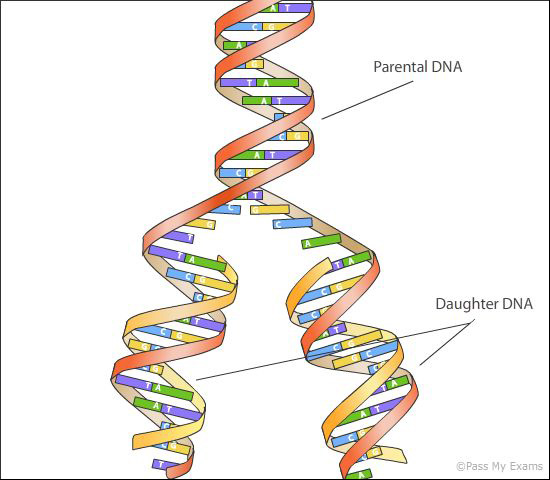Making new DNA (DNA Replication)
During cell division, each new cell or daughter cell must have the same number of chromosomes as the parent cell. Therefore when a cell divides, the chromosomes split lengthways and each half enters the new cell ensuring the same number is in the new cell and parent cell.
Chromosomes are made up of DNA, so in order for the chromosomes to make exact copies of themselves so must the DNA. If this was not possible, the new cells would not hold all the correct genetic information they require (remember a gene is a small section of DNA).
DNA replication is a complicated process involving enzymes and proteins contained within the cell. The details of this process are beyond the scope of GCSEs so a summary of the main steps is provided to give a simplified overview of the process.
- The DNA molecule unwinds by the action of an enzyme which beaks the hydrogen bonds holding the base pairs together.
- Small proteins bind to each side to keep the two strands separated.
- New nucleotides, which are present in the nucleus of the cell, line up along each single DNA strand following the base pair rules.
A lines up alongside T
C lines up alongside G - The nucleotides join together making two new DNA molecules, and each one is an identical copy of the parent cell’s DNA. The DNA molecules automatically wind up into the double helix shape.
As the DNA is such a long molecule the replication process begins at multiple locations along the molecule.
The process of DNA replication is illustarted in the diagram below:

